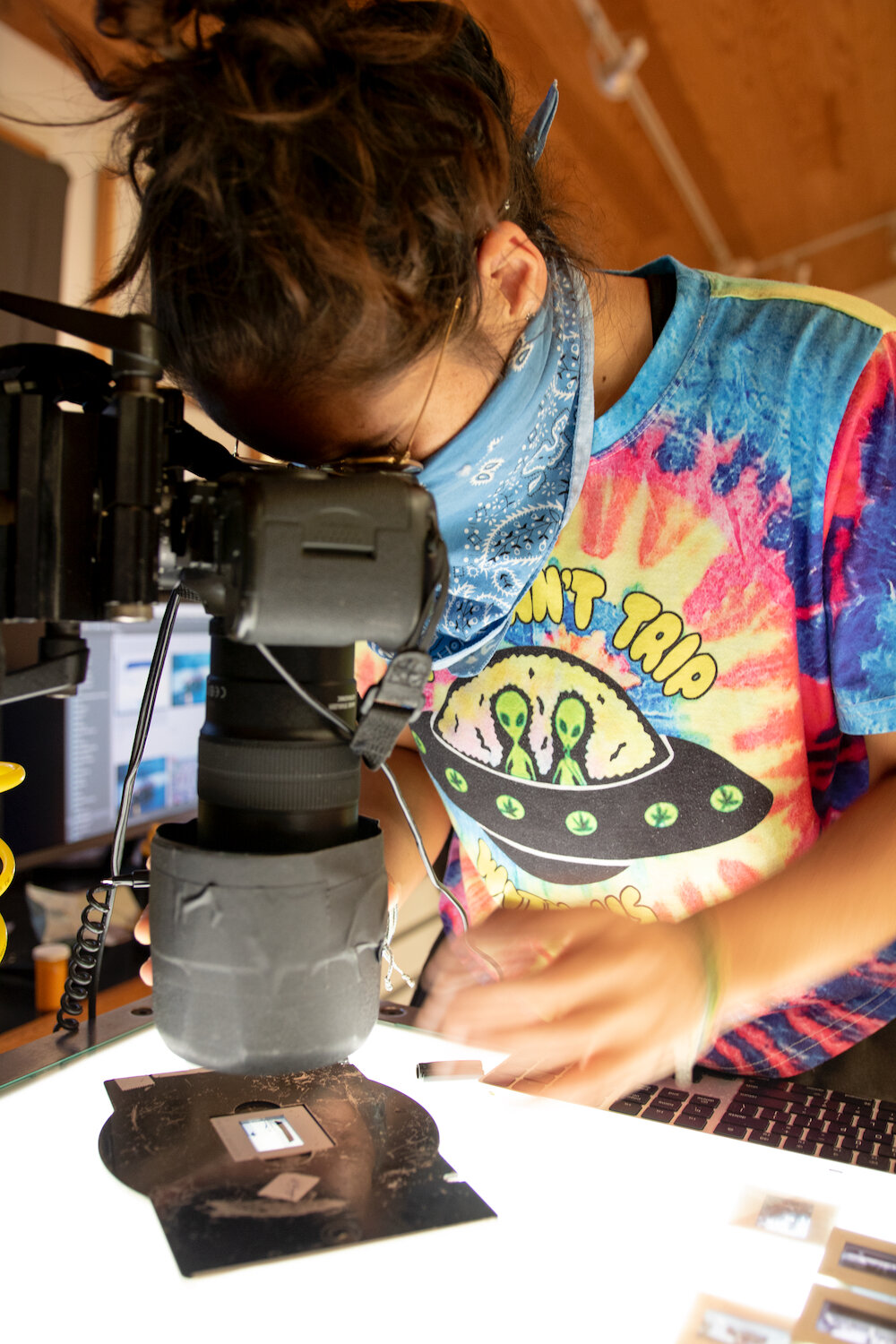We use a 50 megapixel sensor Canon 5d SRS camera with an extremely high pixel count. It is paired with a modern Canon 100mm f2.8 macro lens designed for extreme close up photography.
Richard and Nadia photograph slides. Each image becomes 275 megapixel tif! We shoot a dark, light and medium exposure. Camera Raw is calibrated for our light source.
The slides are held in an Omega enlarger slide holder laid flat above a light table. The light table provides illumination to auto focus each slide, as film flatness and the slide mounts change the distance to the lens. Each slide is blown off with a air compressor powered nozzle to dislodge dust from its surface. The slide holder is suspended by wooden blocks above the surface of the light table so any dust on the light table is out of focus.
A powerful studio flash head, (a Comet model from Japan), is used for the exposure of the slide. The short duration flash ensures that any movement, which is magnified by close focus, will be frozen. The color of the light is similar to daylight (because the ionizing gas in the flash tube is xenon). The flash is so bright that we use multiple lens hoods to shade the lens so the only light the camera sees is through the slide itself.
The battery of the camera has been replaced by an AC adapter, otherwise the camera would run out of juice quickly since it is always on. The camera has three electrical connections: a computer cable, AC power, and the flash sync cord - it has been transformed into a computer peripheral.
The camera is connected to our Mac Pro computer by an extended hard drive cable to a USB port on the computer. Our software is Canon EOS utility, which can control the camera from the computer. This is called tethering. We can adjust most aspects of shooting the camera remotely. Exposures of the slides vary considerably. It is amazing how well a dark slide can be recovered by a bright exposure - the camera sees much more than the human eye.
The computer is hooked up to a OLED 65” flat screen monitor to preview the slide images which are displayed using Adobe Bridge as our viewing software. We check out the exposure–and the cropping of the slides–and make adjustments.
After the slides are shot, in the computer we crop the edges of the slide mounts away, and further adjust the image so the highlights and shadows are correct. Many slides also need color correction and images may need straightening based on the subject matter and whether the camera was held level during the original photograph. Photoshop is the preferred imaging software for extensive edits.
We were curious how much are the gear for this set up cost so we added it up - about $18,000. In our case, we had everything on hand, except for a few odds and ends. One could make a copying arrangement more cheaply, but with many thousands of slides to reproduce, this system is optimized for our needs.
Nadia working on a slide.
If you have precious slides you would like copied, please email us through the contact page.
Here is a old slide from 1969 of a young Carlos Santana


